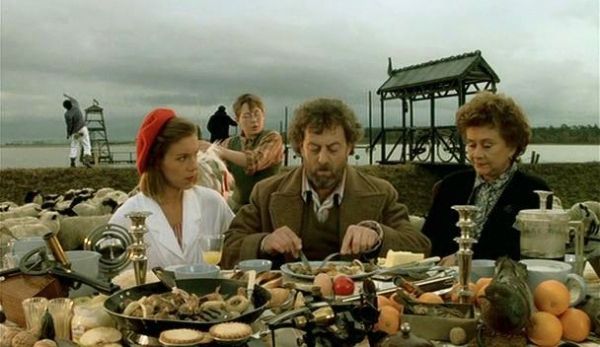What To Do With A Failed Business Or Product

If there’s a skill I have mastered during the years, it’s failing. Since I became an entrepreneur, I have embarked on many different projects. Some of them have been successful, but most of them failed. As a result, I’ve had to decide what to do with quite a number of surplus products. In this post, I want to discuss what to do with a failed business or product, and how to deal with those failures.
The (Lost?) Culture Of Effort
The featured image of this post is “Dali Atomicus“. It’s not digitally processed. It took photographer Philippe Halsman and artist Salvador Dalí almost 30 tries to get it right.
… Assistants, including Halsman’s wife and young daughter Irene, stood out of the frame and, on the photographer’s count, threw three cats and a bucket of water into the air while Dalí leaped up.
After every take, while the photographer was developing the film, the team would dry the floor, tidy up everything and catch the cats. Then the photographer would get back and ask them to repeat everything again.
Can you imagine that?
In today’s world of Instagram and “Instagrat” -instant gratification-, that piece of art seems both like a tremendous anachronism and an amazing achievement.
It serves to remind us that most great things take time and effort. However, other times, things just don’t work.
Knowing When To Hold On To A Business
My first big startup was The Task Ninja. It was conceived as a tool to help small businesses and teams manage their tasks and customers. Kind of a mix between a task management tool and a CRM at small scale.
The idea was to avoid the procrastination of chat tools like Slack and offer small teams -like startups- the perfect tool to communicate and manage their teams.
It was a complete commercial failure.
The product was certainly cool, based on a great idea, and solved a real problem. However, we fell into the trap of building a product from a promising idea and then trying to look for a market.
Obviously, we discovered that most startups were not willing to pay for a product like that, especially when they had tools they regarded as similar (like Trello) for free.
Being my first big failure, I held on to it for too long. Even when it was clear that it was a failure, I insisted on trying to make it work.

Embracing Failure
Finally, I accepted that The Task Ninja was a failure and let it go.
It was a hard decision for me. I took it personally and, instead of seeing it as a failed product, I saw it as if I was the one that had failed.
For quite some time, I felt depressed and frustrated. I had just put a lot of work into that, countless hours and a lot of illusion.
All that had just went down the sink forever.
It took me actually some time to recover from that first disappointment. Some time, until I could actually have a look at the folder where I kept all the project’s files. And when I did, the first question that came to mind was:
What am I going to do with all this?
Sure, I could just ignore it or delete it. However, part of the reason why the product failed is because I fell in love with it, up to the point of not acknowledging that it was leading nowhere. A classic beginner’s mistake.
Hence, I was reluctant to just drag the folder to the Trash icon.
“This software is actually good, and we put a lot of effort and care on it. Deleting it would just be a waste”
After long consideration, I decided to offer the tool for free. Even if it was not going to make me rich, helping others seemed to me a better alternative than letting it fall into oblivion.

What To Do With A Failed Business Or Product
So, what to do with a failed business? Apart from the red tape considerations -closing the company, dealing with the partners, etc-, you need to decide what to do with your product. Of course, if there were several members on the team, they all should take part in the final decision.
You may not even have a completed MVP. But if you happen to have a piece of software that’s worth something, these are some of the things you can do with it.
Sell It
There are places where you can sell your startup or project. One of them is Flippa. There, you can sell from websites and online shops to full SaaS companies.
In order to do that, you will need to collect all the information, assets and resources related to your business and list them for sale. This includes the website, any software, SaaS or related data, the hosts and databases, etc.
You’ll put together a better offer if you can demonstrate that your business or startup has some value or at least potential.
If it’s a blog, include analytics with proof of visits and engagement. If it’s a startup, and you have users, engagement or were even generating revenue, document it all. The more value and potential you can show, the more appealing your offer will be.
Another option is making a private auction. I have done this at least once successfully in a startup hub. Actually, I would call it a pretty decent “exit” for a product that wasn’t working for me.
Offer It For Free
If you can afford it, one alternative is to give it away for free. Of course, this might not be appropriate in your case due to software or hosting maintenance costs.
That’s exactly what I did with The Task Ninja. Since then, it has grown to dozens of users. None of them is willing to pay for it, of course, but at least, I am proud to know that something I built is helping others every day.
Does it mean that we could have made it work by offering a freemium subscription model? No. We tried that and didn’t work. Simply put, the product was not intended to be successful.
Thus, if you still love the product, can afford to host it, and think that it can add value to others, why not offer it for free?
Open Source It
Another interesting option, if you are in the “Good Samaritan” vibe, is open sourcing it. Put it on Github and announce it publicly.
This requires a higher level of detachment and generosity from you, as that usually implies also losing control of something you once built and loved.
However, donating it to the community has its advantages. There might be others who find it valuable and decide to continue with your work.
If that happens, you will be proud of knowing that you started something that’s being maintained, enjoyed and shared by the community. You still won’t be rich, but yeah, you can’t always get what you want.
Look For Someone To Continue Your Work
This is similar to open source it. Some years ago, I started a project called “No more ads“. The idea was nice enough: promoting ads-free initiatives, products, and services, to help to make the internet a more beautiful and decluttered place. We even had a manifesto.
Nevertheless, soon after starting the project, I realized I was not going to be able to commit to it. I had way too many obligations and work already.
Then, by chance, someone wrote me an email, telling me how he loved the project, asking me how he could help.
I confessed him my lack of time to work on it, and offered him to continue the project, which he accepted.
I am so happy I took that decision. He has continued on with the idea, and as it’s something I built without any commercial interest, I am just glad that someone else is able to keep it alive and running.
Hence, another option to consider: look for somebody interested in taking over the business.

Let it Go
Even if we feel really attached to a business or product, sometimes it’s better to let it go.
In a way, this is similar to a badly broken relationship. There are times when you just need to completely get over it to be able to move on with your life.
If that’s your case, don’t hesitate. Delete that damn folder, remove any backup you may have, close any related account, and just forget about it. Give yourself some time, but don’t mourn forever, focus on your next project.
Remember, those who get it right the first time are the exception, not the rule.
Conclusion
During my career as an entrepreneur, I have failed quite a number of times. Apart from the lessons you learn, one of the things you end up with is a product, service or piece of software you can’t or don’t want to use any longer.
If you are wondering what you can do with it, in this post, I explain what to do with a failed business or product.
Additionally, I share with you my feelings on letting go of those businesses you helped to grow and those products you helped to create.
Is there anything I missed? Don’t hesitate to share your thoughts in the comments below!




Comments ()